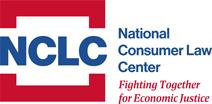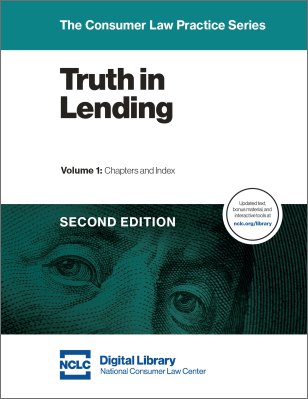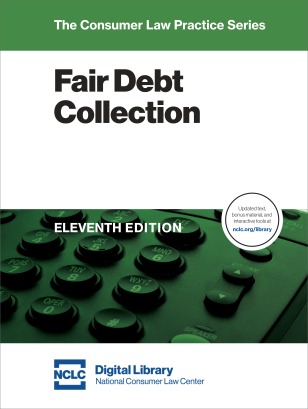A unanimous Supreme Court on April 21, 2022, issued an important ruling applicable when consumer practitioners have difficulty meeting a limitations period found in consumer legislation. In Boechler, P.C. v. Commissioner of Internal Revenue, 2022 WL 1177496 (U.S. April 21, 2022), the Court ruled that a federal time deadline is jurisdictional only if Congress clearly states that it is. If a limitations period instead is nonjurisdictional, then the limitations period is presumptively subject to equitable tolling.
Boechler thus means that equitable tolling is an available approach to extend a federal consumer law’s limitations period, where the facts are sufficient to justify the tolling. Another implication mentioned in the decision is that, while jurisdictional issues can be raised at any time, if a limitations period is not jurisdictional the defendant will have to raise in a timely manner the consumer’s late filing. Federal Rule of Civil Procedure 8 provides that the limitations period is an affirmative defense.
Strong Presumption That Limitations Periods Are Not Jurisdictional
The Supreme Court in Boechler sets out a precise rule as to when a time limit is jurisdictional. For a limitations period to be jurisdictional, Congress must clearly state that it is jurisdictional. The Court quoted from United States v. Kwai Fun Wong, 575 U.S. 402, 410 (2015), that the “traditional tools of statutory construction must plainly show that Congress imbued a procedural bar with jurisdictional consequences.” Boechler at *3.
If one interpretation of a limitations period is that it is jurisdictional and another plausible interpretation is that it is not jurisdictional, then Congress has not been clear, such that the limitations period is nonjurisdictional. This is the case even if the interpretation favoring the limitations period being jurisdictional is a somewhat stronger one. “Where multiple plausible interpretations exist—only one of which is jurisdictional—it is difficult to make the case that the jurisdictional reading is clear.” Boechler at *4.
The fact that the better argument favors the period being jurisdictional is not enough—“But in this context, better is not enough. To satisfy the clear-statement rule, the jurisdictional condition must be just that: clear.” Id.
Where another provision in the same statute clearly makes a procedural step jurisdictional, this is a further basis for finding that a procedural step that is not as clearly jurisdictional must instead be nonjurisdictional. Id.
Moreover, the Court quoted from Sebelius v. Auburn Regional Medical Center, 568 U.S. 145, 154 (2013), that a requirement “does not become jurisdictional simply because it is placed in a section of a statute that also contains jurisdictional provisions.” Id. There must be “a clear tie between the deadline and the jurisdictional grant.” Id.
Boechler deals with a time deadline to file an appeal to Tax Court from an IRS administrative decision, and holds the “Commissioner’s weakest argument” to be that courts in analogous situations had found a time deadline jurisdictional. The decision dismisses reliance on older lower court cases because the Court is bringing new discipline to the use of the term “jurisdictional.” It signals a new approach that can be used to re-evaluate older decisions. Id. at 5.
Non-Jurisdictional Limitations Periods Are Presumptively Subject to Equitable Tolling
The second important ruling in Boechler is that nonjurisdictional limitations periods are presumptively subject to equitable tolling. The IRS pointed to United States v. Brockamp, 519 U.S. 347 (1997), which held that equitable tolling was not allowed under a different provision in the IRS Code. The Court distinguished Brockamp because the statute there reiterated the same time limit multiple times, the time limit was set out in great detail and complexity, and the statute provided a large number of exceptions to the time limit. The statute in Boechler contains few exceptions and the time limit is mentioned only once in simple terms, leading the Court to find that equitable tolling should be available under that statute, if the circumstances support it.
Another reason the Court had rejected equitable tolling in Brockamp was the administrative problem it would pose in allowing late filings while processing more than 200 million tax returns each year and issuing more than 90 million refunds. Boechler at *6. Equitable tolling in the typical consumer case creates a minimal administrative problem for the defendant and the limitations period is indicated once, in simple terms, with few if any exceptions listed.
This view that nonjurisdictional limitations periods are presumptively subject to equitable tolling applies not just to actions in federal courts, but to those in bankruptcy courts and in federal agency proceedings. In Boechler footnote 1, the Court indicates:
In passing, the Commissioner briefly suggests that equitable tolling might not apply outside the realm of Article III courts. We have already applied it in other non-Article III contexts, however, and the Commissioner does not ask us to reconsider those precedents. See Young v. United States, 535 U. S. 43, 47 (2002) (bankruptcy court limitations period); United States v. Kwai Fun Wong, 575 U.S. 402, 407, 420 (2015) (deadline to present claim to agency).
Boechler Has Important Applications to Federal Consumer Laws
Many federal consumer statutes have relatively short limitations periods. For example, the Truth in Lending, Consumer Leasing, Electronic Funds Transfer, and Fair Debt Collection Practices Acts have one-year limitations periods for most violations. Equitable tolling is also an important tool for consumers under other consumer statutes with longer limitations periods.
While most courts interpret the limitations period found in the Truth in Lending Act, Fair Credit Reporting Act, Telephone Consumer Protection Act, Credit Repair Organizations Act, Fair Debt Collection Practices Act, Real Estate Settlement Procedures Act, and other consumer statutes to be nonjurisdictional, there are outliers. The Court in Boechler explicitly rejects reliance on older lower court outliers finding limitations periods in other contexts to be jurisdictional.
Boechler instead indicates that outlier courts should take a fresh look to see if Congress clearly stated in the statute that the limitations period was jurisdictional. Typically, the language of consumer statutes’ limitations provisions provides no clarity that they are meant to be jurisdictional. The very fact that most courts find a statute’s limitations period to be nonjurisdictional is additional evidence that Congress did not clearly state the limitations period was jurisdictional.
Boechler is also particularly helpful in the common situation where a consumer statute’s limitations period is found in the same statutory subsection as its jurisdictional provisions. As noted above, Boechler holds that a time deadline does not become jurisdictional simply because it is placed in a section of a statute that also contains jurisdictional provisions. Boechler states that this is not “a clear tie between the deadline and the jurisdictional grant.”
Consequently, Boechler is controlling precedent that the inclusion of the limitations period in the same section as jurisdictional provisions is inadequate to find the limitations period to be jurisdictional. The following provisions in consumer legislation contain both the limitations period and jurisdictional provisions:
- Military Lending Act, 10 U.S.C. § 987(5)(E);
- Real Estate Settlement Procedures Act, 12 U.S.C. § 2614;
- Truth in Lending Act, 15 U.S.C. § 1640(e);
- Consumer Leasing Act, 15 U.S.C. § 1667d(c);
- Fair Credit Reporting Act, 15 U.S.C. § 1681p;
- Equal Credit Opportunity Act, 15 U.S.C. § 1691e(f);
- Fair Debt Collection Practices Act, 15 U.S.C. § 1692k(d);
- Electronic Funds Transfer Act, 15 U.S.C. § 1693m(g);
- Odometer Act, 49 U.S.C. § 32710(b).
Examples of Equitable Tolling
Boechler is good precedent that equitable tolling is available to extend the limitations period in consumer legislation. But this is only the first step. Next, the consumer must make a compelling case that equitable tolling is appropriate in the specific circumstances. For example, in Boechler the Supreme Court remanded the case for consideration whether the facts justify application of equitable tolling to the case.
Examples of compelling circumstances for equitable tolling may include, but are not limited in any way to the following:
- The consumer seeks to bring an action within the limitations period, but the defendant insists on enforcement of an arbitration requirement, and then refuses to participate in the arbitration. Even if the limitations period expires while the consumer was fruitlessly trying to arbitrate the case, equitable tolling should allow for the action later to be brought in court.
- The consumer files the action within the limitations period, but the case must be re-filed again for technical reasons. See American Pipe and Construction Co. v. Utah, 414 U.S. 538 (1974).
- The consumer is a class member in a class action that is later dismissed after the statute of limitations has expired.
- The consumer has no control over discovery delays, and only after discovery learns that a new party defendant should be added, equitable tolling should apply to allow for the addition of that defendant.
- Mental and/or physical illness delays filing of the claim.
- The consumer delayed a lawsuit at the defendant’s inducement.
What Event Triggers Running of the Limitations Period?
Before reaching the issue of equitable tolling, an initial issue in calculation of a limitations period is what triggers when the period begins to run. The answer is different for different federal consumer statutes, and the practitioner must consult the statutory language and applicable case law.
For example, the Fair Debt Collection Procedures Act period generally runs from the violation, not discovery of the violation. Rotkiske v. Klemm, 140 S. Ct. 355 (2019). See NCLC’s Fair Debt Collection § 12.3.1. For Truth in Lending Act disclosure violations, it runs from the time of disclosure, while for Consumer Leasing Act disclosure violations it runs from the termination of the lease agreement. See NCLC’s Truth in Lending § 13.7.3.
For the federal Odometer Act, it runs from discovery of the violation. See NCLC’s Automobile Fraud § 6.4.1. The Fair Credit Reporting Act has a hybrid, running from two years from discovery of the violation, but in no event more than five years from the violation. 15 U.S.C. § 1681p. See generally NCLC’s Fair Credit Reporting § 12.3.1.3.1.
The Magnuson-Moss Warranty Act follows the UCC limitations period, which runs from tender of delivery, except that where a warranty explicitly extends to future performance of the goods and discovery of the breach must await the time of such performance, the cause of action accrues when the breach is or should have been discovered. See NCLC’s Consumer Warranty Law § 7.6.3.
The Fraud-Based Discovery Rule—Distinguished from Equitable Tolling and the General Discovery Rule
Distinct from the question as to whether the limitations period generally runs from discovery is the fraud-based discovery rule that applies even if the limitations period generally runs from the violation and not discovery of the violation. Justice Ginsburg’s separate opinion in Rotkiske v. Klemm,140 S. Ct. 355 (2019) discusses the fraud-based discovery rule at some length. She finds “the rule governs if either the conduct giving rise to the claim is fraudulent, or if fraud infects the manner in which the claim is presented.” Id. at 365.
Justice Ginsburg distinguishes the fraud-based discovery rule from equitable tolling. Equitable tolling pauses or “tolls” a statutory limitations period after it has commenced. A litigant qualifies for equitable tolling only if they establish “(1) that he has been pursuing his rights diligently, and (2) that some extraordinary circumstance stood in his way and prevented timely filing.” Id. at 363, citing Menominee Indian Tribe of Wis. v. United States, 577 U.S. 250, 255 (2016).
By contrast, Justice Ginsburg indicates that the fraud-based discovery rule sets the time at which a claim accrues, i.e., the time when the statute of limitations commences to run. When a plaintiff is injured by fraud, the bar of the statute does not begin to run until the fraud is discovered. Id., citing Merck & Co v. Reynolds, 559 U.S. 633, 644–645 (2010). See generally NCLC’s Fair Debt Collection § 12.3.4.
Other Grounds to Extend a Limitations Period
The Truth in Lending Act (TILA) explicitly provides that a TILA claim can be brought after the limitations period has expired by way of recoupment in a collection action against the consumer unless state law holds to the contrary. See 15 U.S.C. § 1640(e). Recoupment as a means to extend a limitations period is examined at NCLC’s Truth in Lending § 12.2.5. Whether it applies outside the TILA context will generally depend on state law.
The period of a servicemember’s military service is not included in computing any limitations period for the servicemember bringing a court action or an action before a federal or state agency. See 50 U.S.C. § 3936(a).
A bankruptcy filing can also extend the limitations period for two years after the bankruptcy order of relief. See 11 U.S.C. § 108(a). See also NCLC’s Collection Actions § 3.7.8.2.2.



